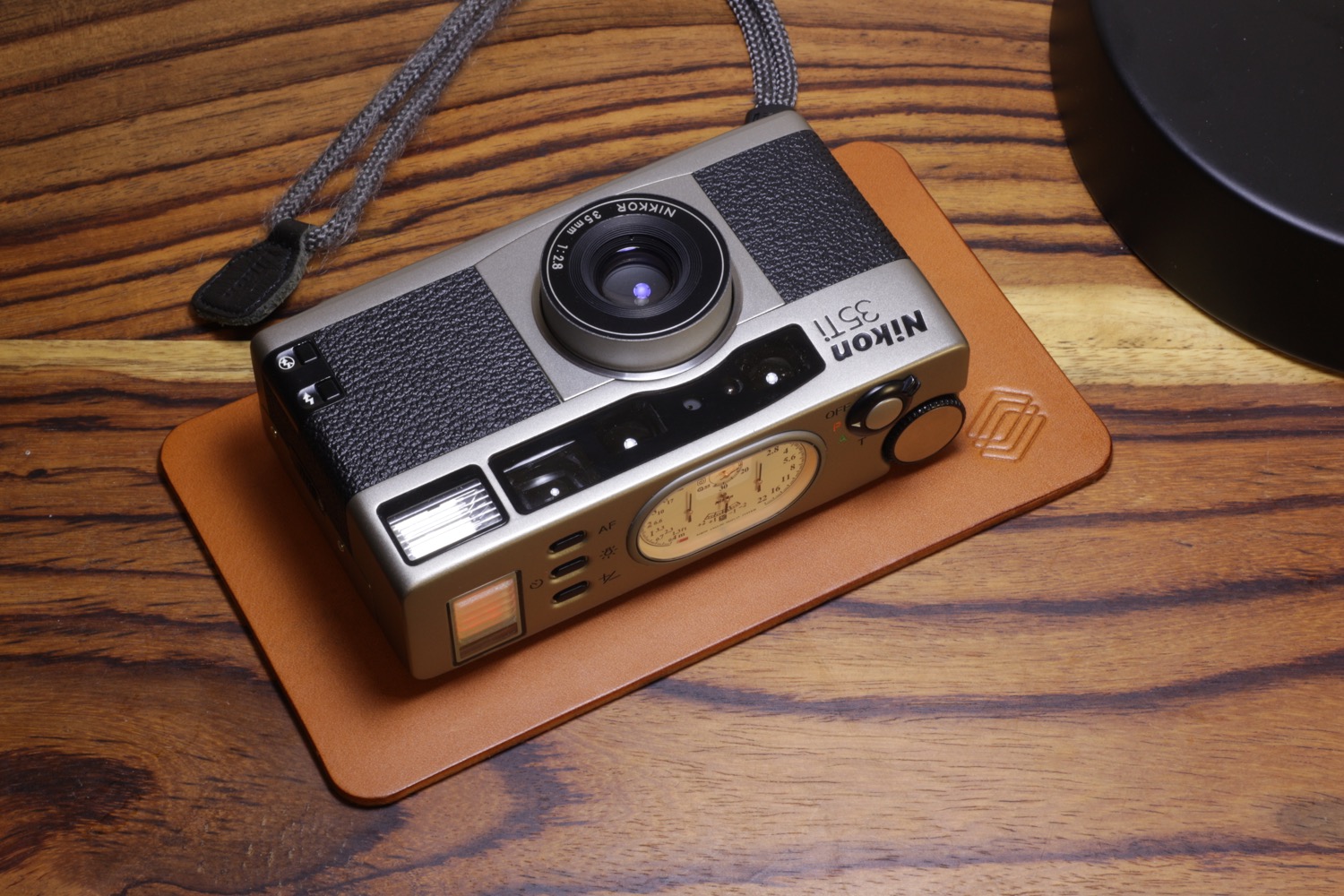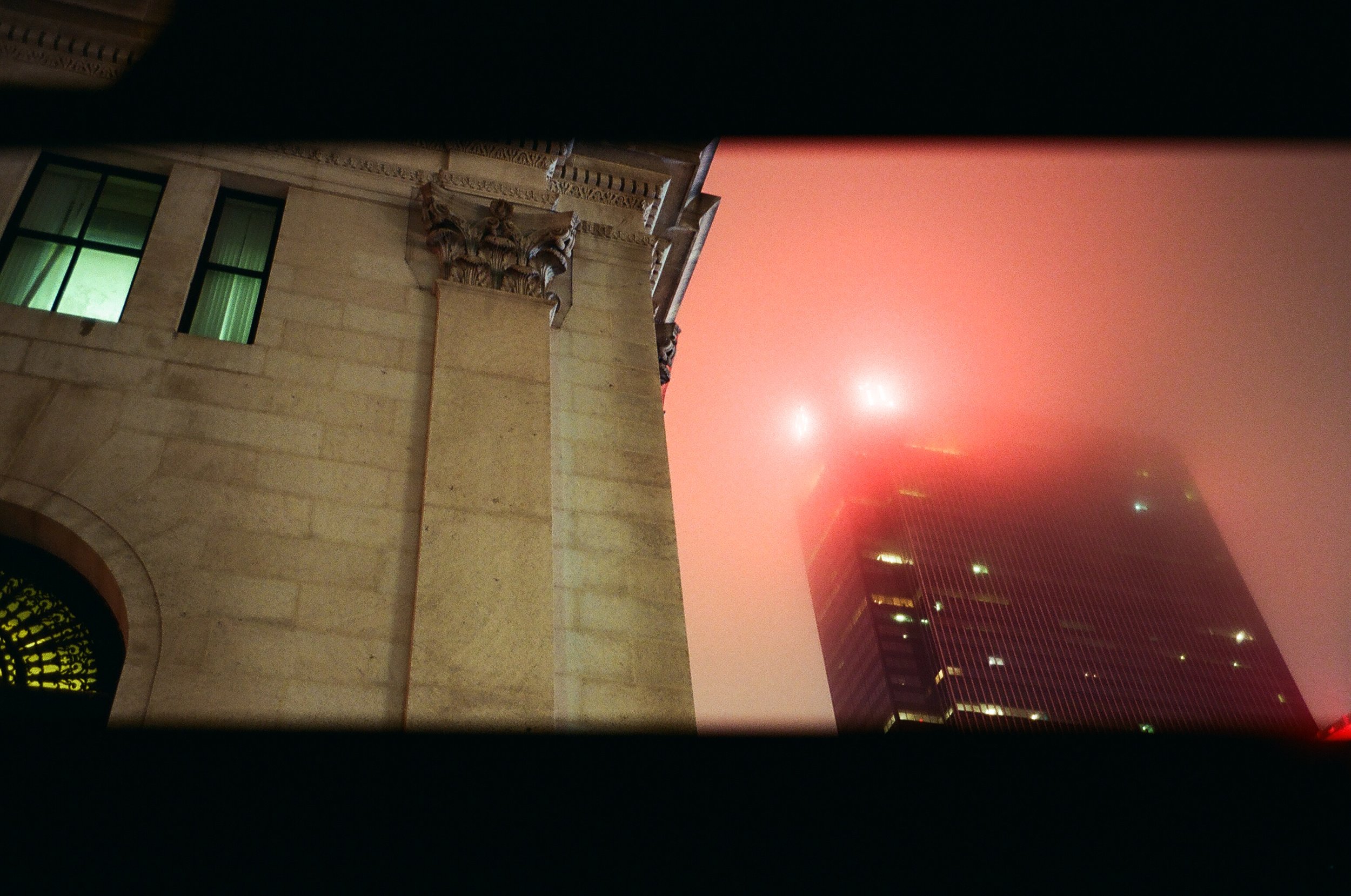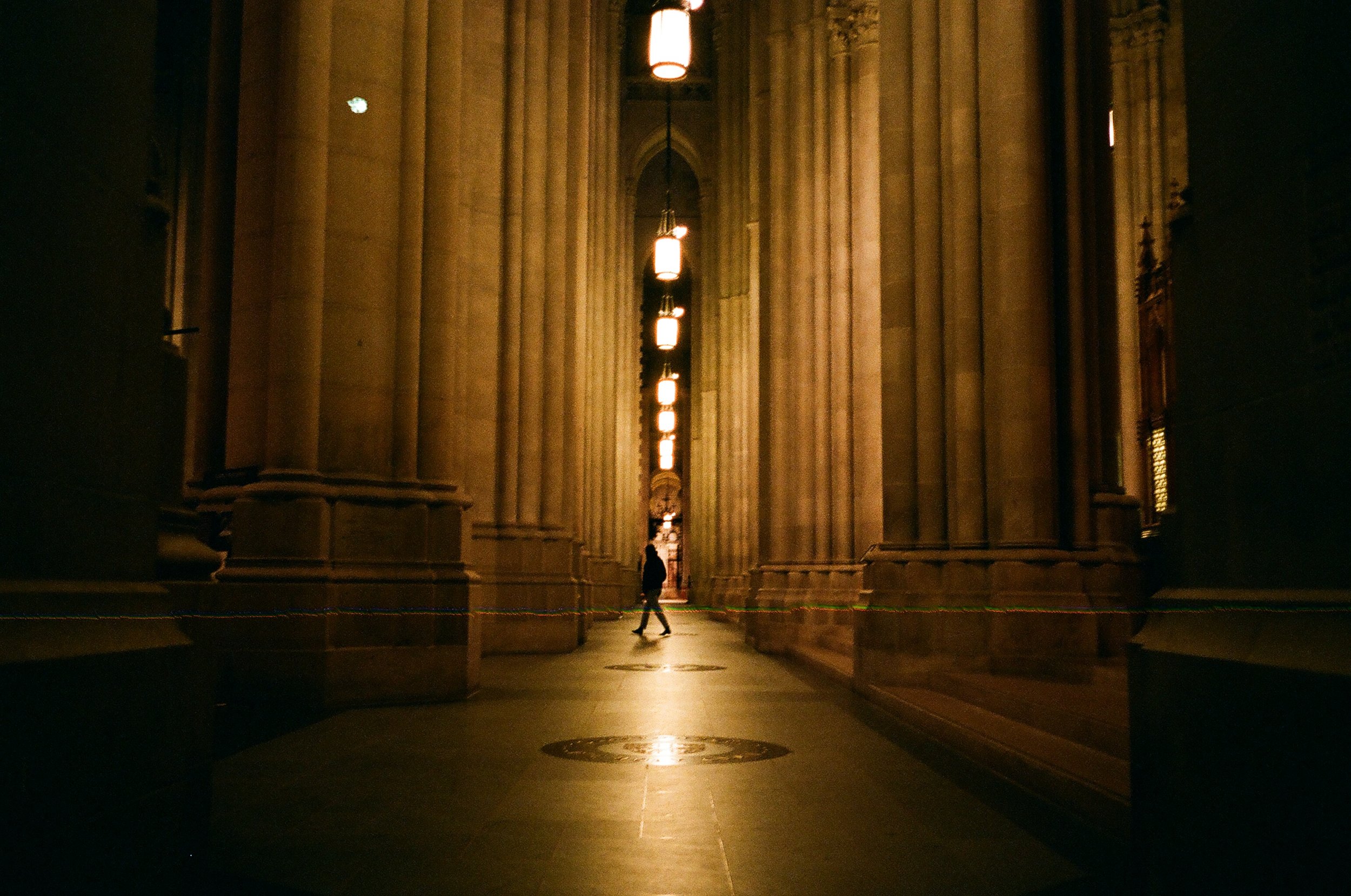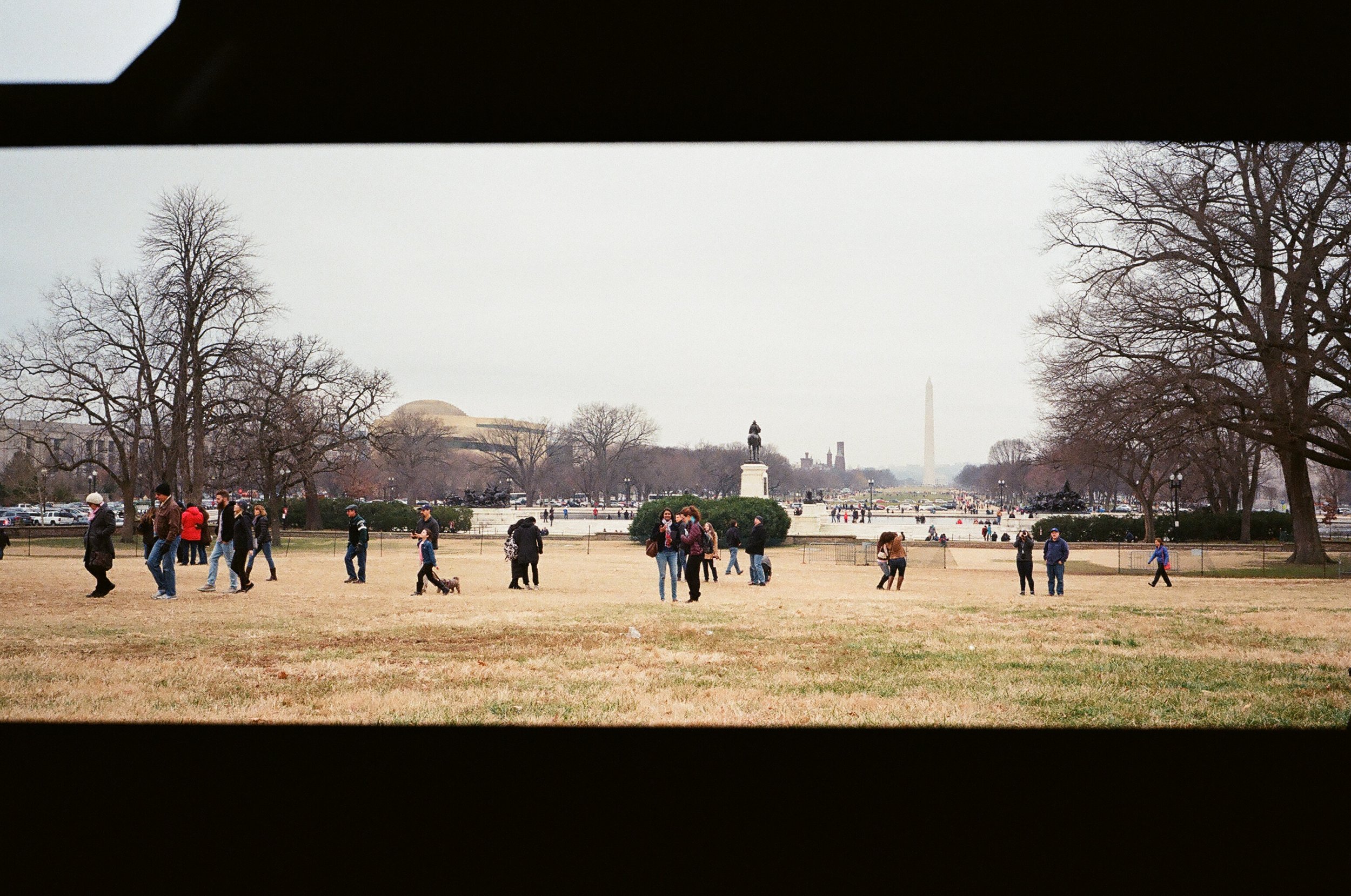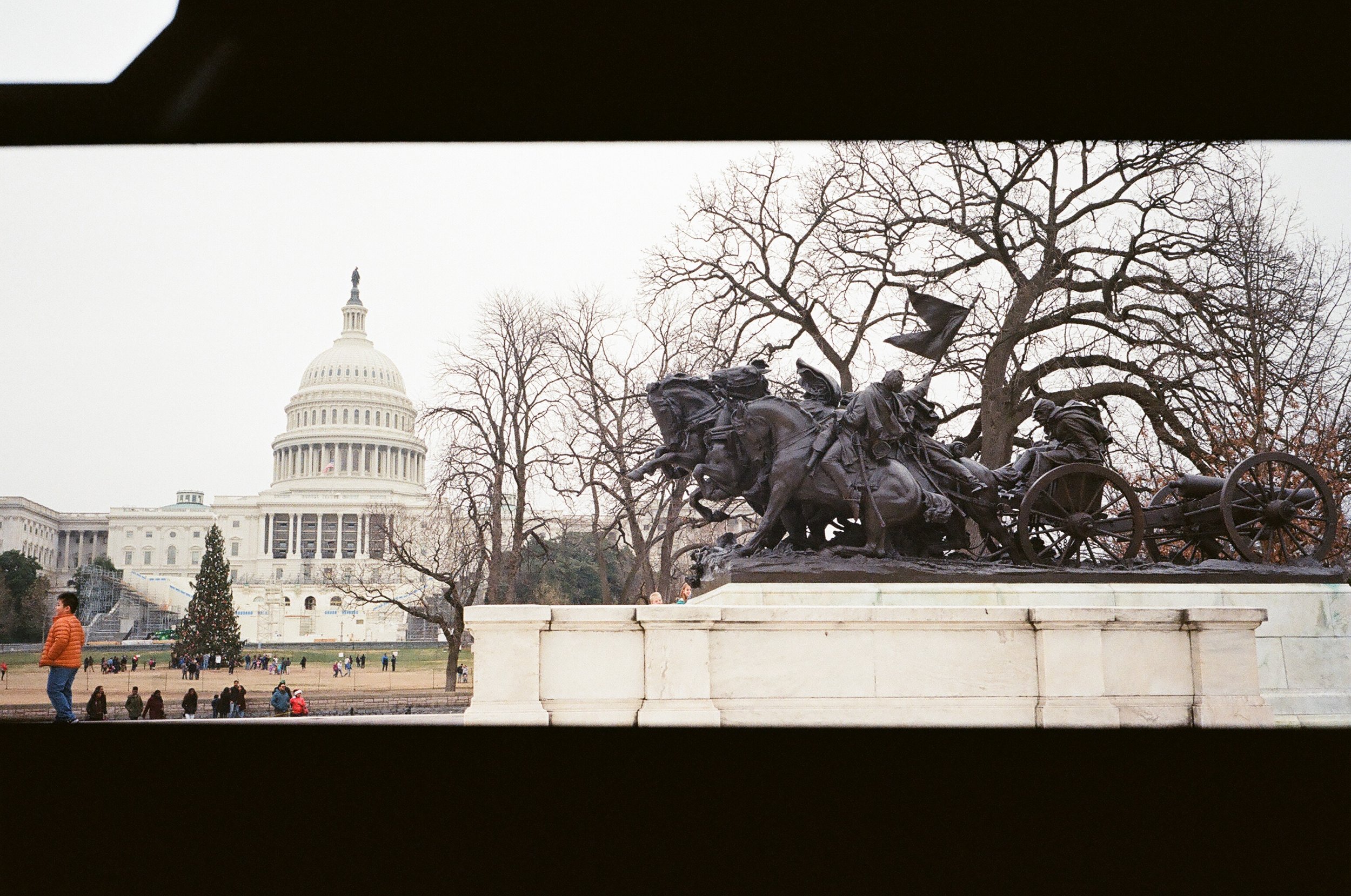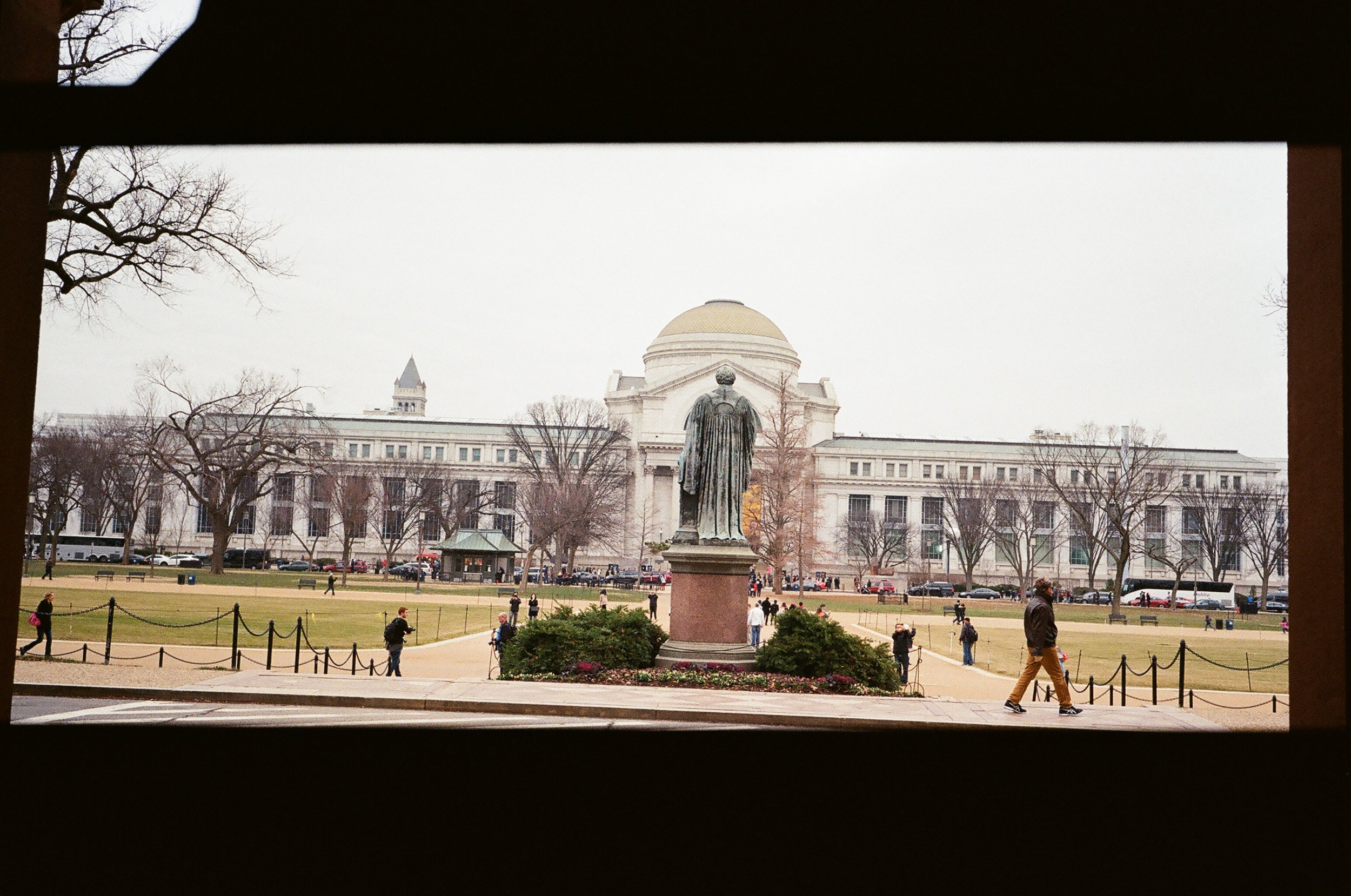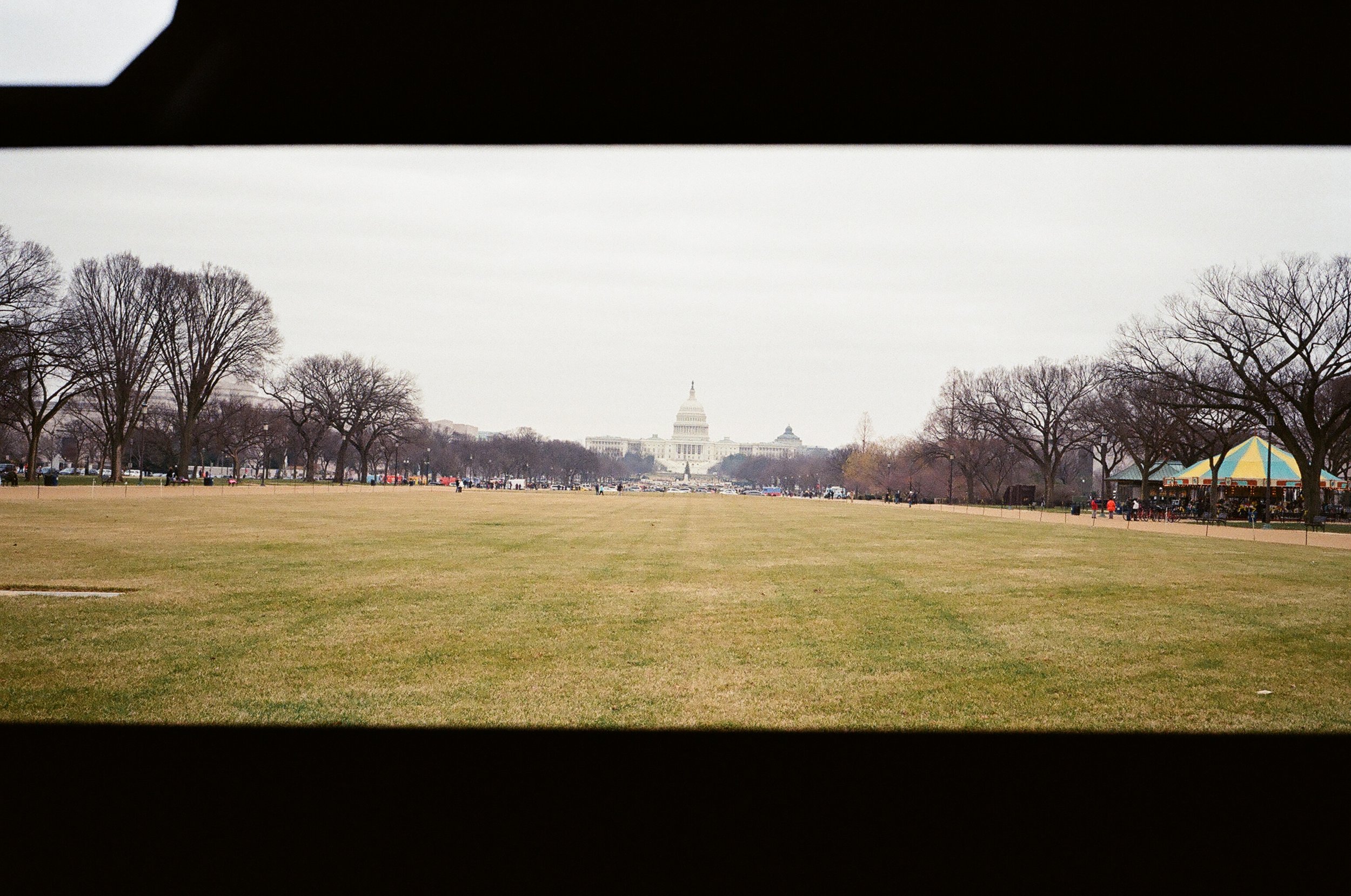Camera: Nikon 35 Ti Premium Compact Rangefinder
Location: New York + Washington D.C.
Film: Unknown
Lens: Fixed Telescoping Nikkor 35mm f2.8
The Nikon 35 Ti is an advanced compact 35mm point and shoot camera first debuted in 1993.Today the Nikon 35 Ti is considered expensive by most at a cost of around 300 to 700 USD, but still thats about half the cost of its release price. The first thing to mention about the Nikon 35 Ti is its high quality fixed 35mm f2.8 lens and excellent metering. It is an excellent camera to use with slide film since slide film does not over or underexpose well.
Chances of a perfectly exposes image taken with the Nikon 35 Ti even in tricky lighting situations are high. After the lens and metering the next feature this camera is known for is its analog dials on the top plate. The 4 analog dials display focus distance, aperture, exposure compensation, and number of pictures taken. All settings remain visible as do the digits on an analog watch, when a setting is set or changed the dial turns to indicate the current setting. Combined with a small light that illuminates the display, the whole interface is reminiscent of the face of an old car radio. The analog dial setting feature is not only cool but feels as practical as a digital or rotary display.
Aside from the Espson RD-1 digital rangefinder, the only other camera with such a full featured analog dial display is the Nikon 28 Ti. Released a year after the 35 Ti the Nikon 28 Ti is basically the same as the Nikon 35 Ti but with a new 28mm focal length lens. the "T" in the "Ti" stands for Titanium, a material usually reserved for limited edition variants of various film cameras such as the Nikon FM2/T and Nikon F3/T. The Nikon 35 Ti has a polished raw titanium finish while the Nikon 28 Ti is finished in Black.
The Nikon 35 Ti is a dream camera for many, simply because there are so many other film cameras the provide the same or similar features with equally good optics for a fraction of the price. The Nikon 35 Ti is and always was a luxury item and many cannot justify the extra money just for the prestige of luxury.
For me the Nikon 35 Ti was also a dream camera but one day I decided the money was worth it. I was preparing for a move to Europe and cleansing of my film cameras collection. I had around 30 cameras at the time and the plan was choose just 3 that I would take with me and sell everything else. The Nikon 35 Ti was meant to be one of those three but it my opinion changed after a few months of using it and It didn't come with me.
My first test of the 35 Ti was a few casual shots around my neighborhood in New York City and then finishing the roll on a Christmas adventure to Washington D.C. It was fun to shoot and I enjoyed the option of having auto focus of manual focus in a film camera. Though autofocus is a common feature in point and shoot cameras and advanced compacts I was more into rangefinders and 1970s era SLRs where auto focus was just not a thing. So the option for autofocus was refreshing. While you can shoot the Nikon 35 Ti in manual focus mode you don't actually turn the lens, to manually focus you move a large knob on the top plate of the camera and read the analog focus distance dial. It's not that practical and I used autofocus for nearly all of my shots.
I even shot a few in the faux panoramic mode which I love even though the top and bottom of the frame are blocked out and it is not a true panoramic camera. After developing the film I was able to see that there was some error in the plastic masks inside the camera for the panoramic mode. One section did not cover all the way and there is a small window of an image in the top left corned that got through. It was mildly interesting - I don't personally know of anybody else who shoots faux panoramic and this was not a problem for the next owner.
My specific Nikon 35 Ti was in pure mint condition. It was a beautiful piece of industrial engineering, a pure work of art. The idea of having only three film cameras did not mix well when one of them being a near show-piece. Even though titanium has the best strength to weight ratio of any natural metal I could not help but feel I was holding a highly delicate machine. Maybe it was the idea of the electronics or the automatic telescoping lens but I deemed it too precious inside and out to be one of my three daily cameras.
I ended up replacing it with a Ricoh GR1 which evoked similar but less powerful emotions. A year and a half later the Ricoh GR1 dies and I gave it away as a store showpiece - a non-repairable random shutter jam.


